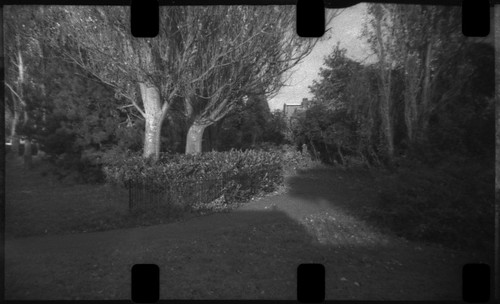 |
| Halina 110 Auto-Flip with Kodak Photo Instrumentation film |
For yesterday's
World Toy Camera Day, I chose a
Halina 110 Auto-Flip as my camera for the day. After having used a relatively sophisticated 110 format camera recently in the
Agfa Optima 6000 Pocket Sensor, it was instructive to compare that camera to what would have been the opposite end of the spectrum in terms of price and quality. Although what precisely defines a 'toy' camera is subjective and debatable, the 110 Auto-Flip has many qualifying characteristics: it is almost entirely constructed from plastic, fixed-focus, and, other than the shutter release and film advance wheel, the only user control that affects results is a sliding switch for the film's ASA setting, which simply changes between two apertures. The camera is also brightly coloured, a sure denotation that it is not to be taken seriously.
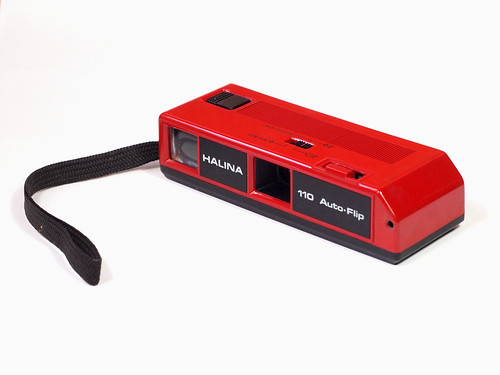 |
| Halina 110 Auto-Flip |
The camera has a single shutter speed, not marked, but probably around 1/60th. There are two apertures, again not defined; the switch on the top slides a plate with a smaller aperture behind the lens. The larger aperture setting is marked for flash or full sun for 100/200 ASA, and flash or cloudy conditions for 400 ASA; the smaller aperture is marked for full sun at 400 ASA. On the top of the camera is a socket for a flip-flash, with distance settings for the flash printed on the transparent window that also functions as the catch to open the door for the film chamber (distance settings are given as 4-9 feet for 100 ASA, or 5-15 feet for 400 ASA). The flip cover is easily detachable; it pivots to an acute angle in relation to the camera itself and supposedly functions as a handle to steady the camera: although the top of the cover has a ruled, grip-like top, the ergonomics are pretty poor. The camera also has a wrist strap.
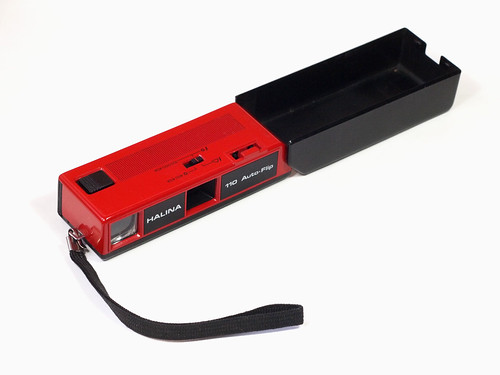 |
| Halina 110 Auto-Flip with open cover |
The lens would appear to be a simple meniscus type; in a number of the photographs taken with the Auto-Flip, some pincushion distortion is evident, with moderate sharpness in the centre. The apertures are relatively small, perhaps f11 and f16, providing reasonable depth of field to the fixed focus lens. The shutter release button is stiff, depressing it gives quite a hard 'click', which must risk some camera shake. The viewfinder, in an odd design quirk is square, despite the 110 negative format being clearly rectangular. However, with the limitations of the Auto-Flip, the main consideration of the viewfinder is simply to ensure the subject is centred, as no accurate framing is possible. As I shot two cartridges reloaded with 16mm film, rather than new 110 stock, as I've written about before, the lack of preprinted frames on the film allows the whole negative area to be used. With the Auto-Flip, the negative is approximately 23mm wide - much wider than the preprinted frame size of around 17mm. However, the image is severely vignetted on the right hand side, which no doubt would be entirely covered by the 110 preprinted frame.
 |
| Halina 110 Auto-Flip with Kodak Photo Instrumention film showing overlapping frames |
As with the
Agfa Optima 6000, the Auto-Flip relies on an internal pin locating the 110 perforations to reset the shutter when advancing the film; unlike the Optima 6000, the pin connects with
every 16mm perforation (as in the image above): instead of shooting one blank frame to advance the reloaded film the correct distance, I found it necessary to release the shutter
twice after each shot, covering the lens, and even then, thanks to width of the Auto-Flip frame, the frame edges were still butted against each other, although the vignetting at one side of the frame generally made this less noticeable. I shot almost all the photographs on the wider aperture setting; of the two films I used, I've found that the Kodak Photo Instrumentation film gives the best results at an exposure index of 100; subsequently shooting a cartridge reloaded with
Eastman Double-X as it was beginning to get dark meant the conditions mitigated against using the smaller aperture setting. The weather conditions were not ideal yesterday, but the Photo Instrumentation film's latitude helped to compensate for this.
 |
| Halina 110 Auto-Flip with cover closed |
The Halina 110 Auto-Flip is entirely typical of a cheap point-and-shoot snapshot model that would be an archetypal 'first camera' from the late 1970s through to the 1980s (indeed, while I first took photographs with a
126 Instamatic, one of my brothers had a 110 'Pocket Instamatic' very much like the Auto-Flip as his first camera). Cheap to buy and very simple to use, the camera would have produced passable results in good lighting conditions on small-scale photo-lab prints; retrospectively, it's sometimes a wonder that such photos, not very sharp, grainy, often underexposed, from a first camera, didn't put people
off photography, but the fact that these cameras were designed to be so easy to use, and, that they did simply produce results, was enough to satisfy the desire to take the photographs in the first place.
 |
| Halina 110 Auto-Flip with Kodak Photo Instrumentation film |
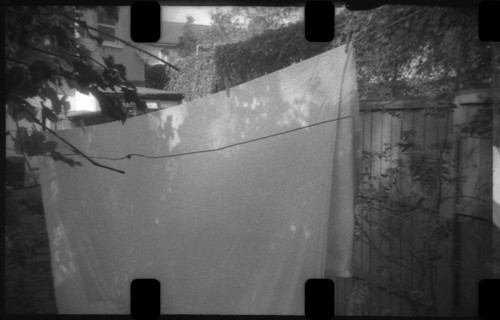 |
| Halina 110 Auto-Flip with Kodak Photo Instrumentation film |
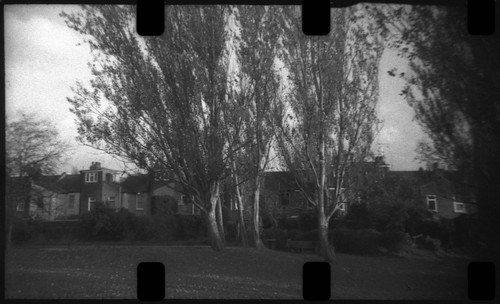 |
| Halina 110 Auto-Flip with Kodak Photo Instrumentation film |
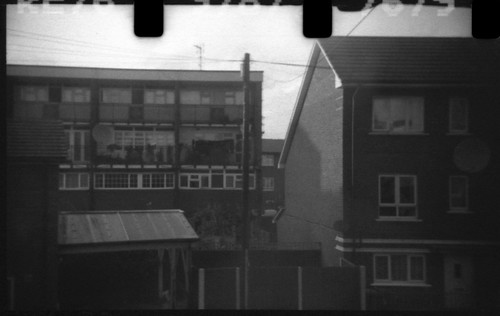 |
| Halina 110 Auto-Flip with Eastman Kodak Double-X film |
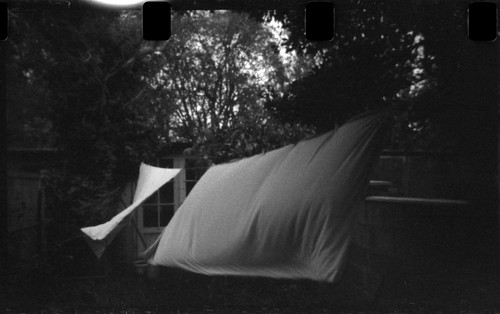 |
| Halina 110 Auto-Flip with Eastman Kodak Double-X film |
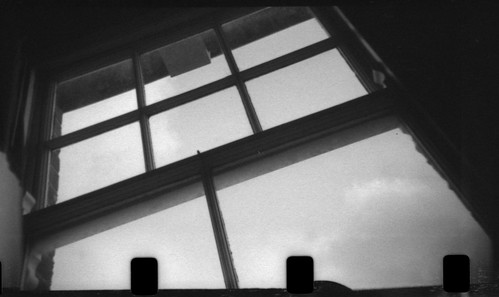 |
| Halina 110 Auto-Flip with Eastman Kodak Double-X film |
Sources/further reading
Haking_Grip-C/Halina 110 Auto-Flip on Camera-Wiki











No comments:
Post a Comment